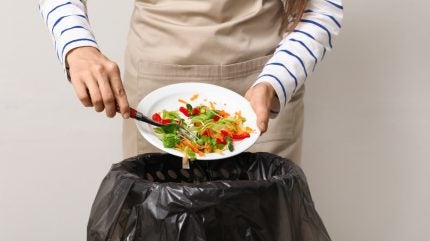
Food waste is a global issue, with millions of tonnes discarded each year. This waste has serious economic, environmental, and social implications, making it a priority for governments, businesses, and consumers alike.
One often overlooked solution in this battle against food waste is packaging.
Thoughtfully designed and innovative packaging can play a pivotal role in reducing food waste, extending shelf life, and minimising the environmental impact of discarded products.
The impact of packaging on food preservation
The primary purpose of packaging is to protect food products from spoilage and contamination. By providing a barrier against external factors such as moisture, light, oxygen, and microorganisms, packaging helps maintain food quality and extends its shelf life.
For example, modified atmosphere packaging (MAP) is a technique that adjusts the levels of oxygen, carbon dioxide, and nitrogen within a package to slow down the growth of bacteria and fungi.
This method has been instrumental in preserving fresh produce, meat, and dairy products for longer periods, resulting in less food waste.
In recent years, packaging technologies have evolved to include smart and active packaging solutions. Active packaging, for instance, can release or absorb substances to prolong freshness.
This includes oxygen scavengers that absorb excess oxygen in sealed packages or ethylene absorbers that reduce the ripening process in fruits and vegetables.
Such innovations are increasingly becoming popular in the food industry, as they provide a cost-effective and efficient way to maintain product freshness, reducing the likelihood of food spoilage.
Similarly, smart packaging incorporates sensors and indicators that monitor the condition of the food. For example, time-temperature indicators (TTIs) change colour based on temperature exposure, alerting consumers to potential spoilage.
By providing real-time information about the product’s freshness, these technologies help prevent the premature disposal of food that may still be safe to consume, significantly reducing waste.
Innovative packaging solutions for portion control
Another key factor contributing to food waste is improper portioning. Consumers often purchase more food than they can consume before it spoils, leading to unnecessary waste. Innovative packaging designs can address this issue by offering convenient portion control options.
Single-serving packaging, for example, has gained popularity as a means of reducing food waste, particularly for perishable items like yoghurt, cheese, and ready-to-eat meals.
By packaging food in smaller portions, consumers are more likely to use the entire product, reducing the likelihood of spoilage. This is particularly beneficial for individuals living alone, elderly consumers, or those with busy lifestyles who may struggle to consume large quantities of food before it expires.
Multi-compartment packaging is another solution that allows consumers to access only the portion they need, keeping the remaining food fresh for longer. This packaging design is often used for products like fresh salads, meal kits, and snacks, where different components can be stored separately until consumption.
This approach not only reduces food waste but also enhances convenience, making it easier for consumers to prepare meals without worrying about leftovers spoiling.
Flexible packaging, such as resealable pouches, also plays a crucial role in minimising food waste. These pouches enable consumers to use a portion of the product and securely reseal the package, maintaining freshness and reducing the likelihood of spoilage.
This approach has become particularly popular in products like nuts, dried fruits, and confectionery, where the ability to reseal the package makes it easier to store and consume over time.
Packaging design and consumer education
While packaging technology is crucial in reducing food waste, the design and communication aspects of packaging should not be overlooked. Clear and informative labelling can significantly influence consumer behaviour, helping them make informed decisions about storage, usage, and disposal.
One major issue is the confusion surrounding “best before” and “use by” dates. Many consumers mistakenly throw away food that is still safe to eat simply because they misunderstand these labels.
“Best before” dates refer to quality, indicating that the food is at its peak freshness until that date but can still be consumed afterwards. In contrast, “use by” dates indicate safety, meaning the food should not be consumed past that date.
Packaging that clearly distinguishes these dates and provides guidance on storage can reduce unnecessary food waste by preventing the disposal of still-edible products.
QR codes and smartphone apps can also play a role in educating consumers about proper storage techniques and recipe ideas for using up leftover ingredients.
By scanning the QR code on a package, consumers can access valuable information about the product, including tips on how to extend its shelf life and suggestions for recipes to avoid waste.
This interactive approach not only makes it easier for consumers to make informed decisions but also promotes sustainability by reducing the amount of food discarded.
Sustainability and the future of packaging
In the quest to reduce food waste, it’s essential to consider the sustainability of the packaging itself. While packaging plays a vital role in preserving food and reducing waste, it can also contribute to environmental problems if not managed properly.
Therefore, the industry is moving towards more sustainable packaging materials and practices to minimise the overall environmental impact.
Biodegradable and compostable packaging materials, such as plant-based plastics and paper-based alternatives, are gaining traction as eco-friendly options.
These materials break down more easily in the environment, reducing the long-term impact of packaging waste. Moreover, they provide the same protective qualities as traditional packaging, ensuring that food remains fresh and safe for consumption.
Recyclable packaging is another key focus, with companies exploring ways to design packaging that can be easily recycled or reused. For example, brands are developing packaging made from a single material, which is easier to recycle than multi-layered packaging made from different materials.
This approach not only reduces the amount of packaging waste that ends up in landfills but also supports a circular economy where materials can be reused and repurposed.



